#zhongguojianfa
Photo
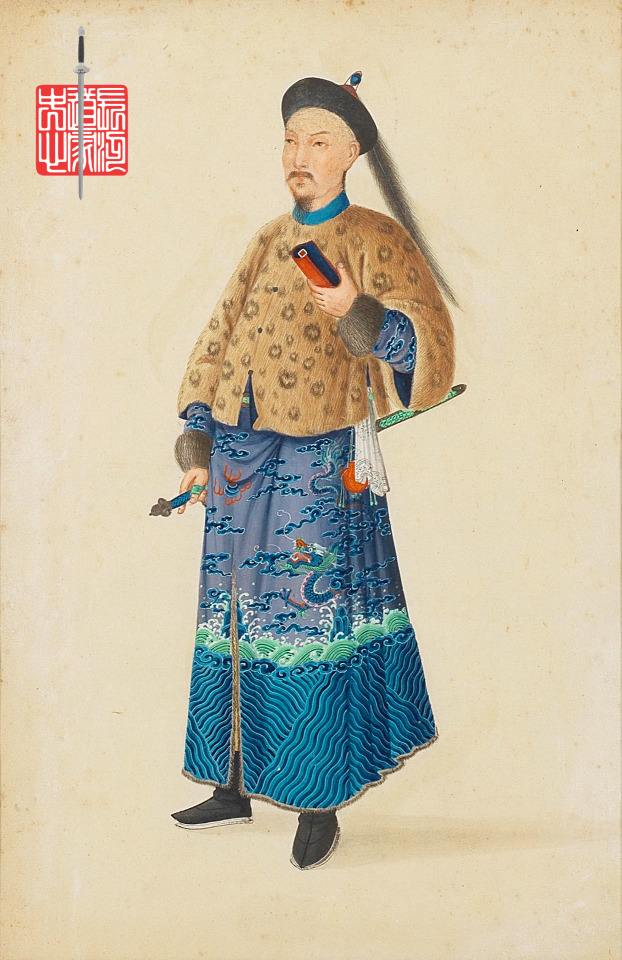
A High Qing Officer
Armed with a Jian. The vast majority of Manchu Bannermen carried dao, so it is quite unusual to see an official armed in this fashion.We know he is a Bannerman by the green jade thumb around his right thumb.Thumb rings were worn as a symbol of their status as Qiren.
One might think that his man was left handed given that he is wearing his sword on his right hip. But the thumb ring on his right thumb indicated he was indeed right handed. Perhaps there were some social situations where those armed were required to wear their swords on the opposite hip to prevent a quick draw. If this is the case, I am unaware of such a tradition in China. My suggestion is pure speculation. It is also quite possible that the artist simple decided he liked this look better and the swords position on the right hip has nothing to do with how it was actual worn.
19th Century, Chinese School Painting.
#zhongguojianfa#jianfa#chineseswordsmanship#historicalswordsmanship#swordsmanship#chineseswordfighting#swordfighting#duanbing#chineseswordwork#swordwork#swords#chineseswordarts#daoistswordarts#swordarts#swordart#chineseswordart#taijiswordfencing#swordfighter#中國劍法#劍法#劍#kungfuweapons
37 notes
·
View notes
Text
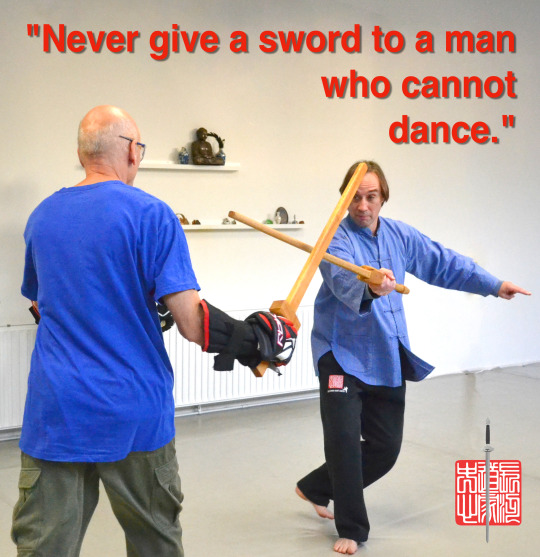
"Never give a sword to a man who cannot dance.” Or at least Confucius is reportedly said so, though this quote is more likely apocryphal than genuine. If he had did indeed written this, Confucius would have no doubt have been using it as a metaphor for not placing someone in a position they are not qualified to fill. If we take this idea literally, then Confucius probably would have actually meant dancing when asked whether or not to trust someone with a Jiàn. Though probably not the sort of dancing you are thinking of. Confucius lived during the later Zhou dynasty (ca. 551–479 BC). During his life, and in many dynasties to come, “Sword Dances” were performed as ritual. The term Jiànwǔ (劍舞, literally, sword dance) was also used to describe the forms used to train soldiers. Minority peoples also practiced war dances to prepare for combat. These ritual court and religious dances required a high degree of precision, flow, and intent. Which is to say nothing of good body mechanics. As do forms practiced by large numbers of men at arms at close quarters when drilling. It then follows that if one is unable to “dance” well with a sword in hand, then it is also unlikely that he’ll flow well in swordplay. Consider if one cannot flow deftly, without hesitation, from one movement to the next in sword forms, or hesitates, rather than moving seamlessly from deflection to cut as one intent, then how can one expect to “dance” smoothly, like a swimming dragon, following and fluidly countering when one’s duifang’s sends blows are raining down?
Lack of preparation in the form of forms (“dances”), training in the Basic Cuts, partner drills, and a methodical progression from fixed step to moving swordplay practice, often results in the sort of slapping together of blades during swordplay derided by past sword teachers. One example from the manual, Zǐwǔ Jiàn by Huáng Hànxūn, advises, “Don’t mutually strike (swords) together at the same time…” And the Yang Family Taijiquan Skill and Essential Points by Huang Yuanxiu records, “The sword is never easy to pass down. Straight forward and back is incomprehensible. If you fake it, cutting like a saber, the old immortal Sanfeng will laugh to death.”
From a modern point of view, if you can’t “dance,” you should at least be cautious about jumping right into swordplay. Dancers move with the rhythm and flow of the music, and with their partners. They intuit the flow and use movements they’ve practiced to follow that pattern. Sounds a good deal like swordplay. If one hasn’t yet learned to “dance” beautifully through the sword form with the same sort of focus and intent of the ancient sword dances, don’t expect to flow with the duifang’s cuts as they rain down, it could be fairly easy to fall into the error
The fix is easy- Practice sword forms as if there’s a duifang there doing his best to cut you. Visual his movements and move with them. Train with a historically accurate sword to avoid misconceptions that arise from light weight, improperly balanced “weapons.” Practice your form mindfully to perfection and you’ll see a difference in your swordplay.
~Scott M. Rodell
#jianfa#chineseswordsmanship#jianshu#chineseswordplay#chineseswordfighting#chinesemartialarts#scottmrodell#duanbing#swordplay#chinesemartialart#scottrodell#yangjiamichuantaijijian#yangstyletaichi#yangstyletaichichuan#taijisword#taichisword#taijijian#zhongguojianfa#ukchineseswordfighting#swordfightingschool#swordfightingskills#swordfightingclasses#swordfighting#chineseswordwork#chineseswordarts#chineseswordart#taijiswordfencing#taijifencing
12 notes
·
View notes
Text

Republican Era Chinese Jian with clearly visible differential heat treating of the edge plate that creates a very hard edge. This harden edge makes it excellent for cutting, and it holds its edge quite well. However, the same hardness than makes for superior cutting effectiveness also means that the edge is relatively brittle. For this reason, Chinese Sword Arts standardly deflect with the blade flat rather that parrying with the edge.
Hard blocks with sanmai (three plate) type swords, those of China and Japan, with the edge can lead to a catastrophic failure of the blade.
#jianfa#chineseswordsmanship#jianshu#chineseswordfighting#chineseswordplay#chinesemartialarts#duanbing#chinesemartialart#chineseswordart#chineseswordwork#swordarts#daoistswordarts#zhongguojianfa#中國劍法#劍法#劍#chineseswords#kungfuweapons#historicalswordsmanship#taijijian#taichisword
6 notes
·
View notes
Text
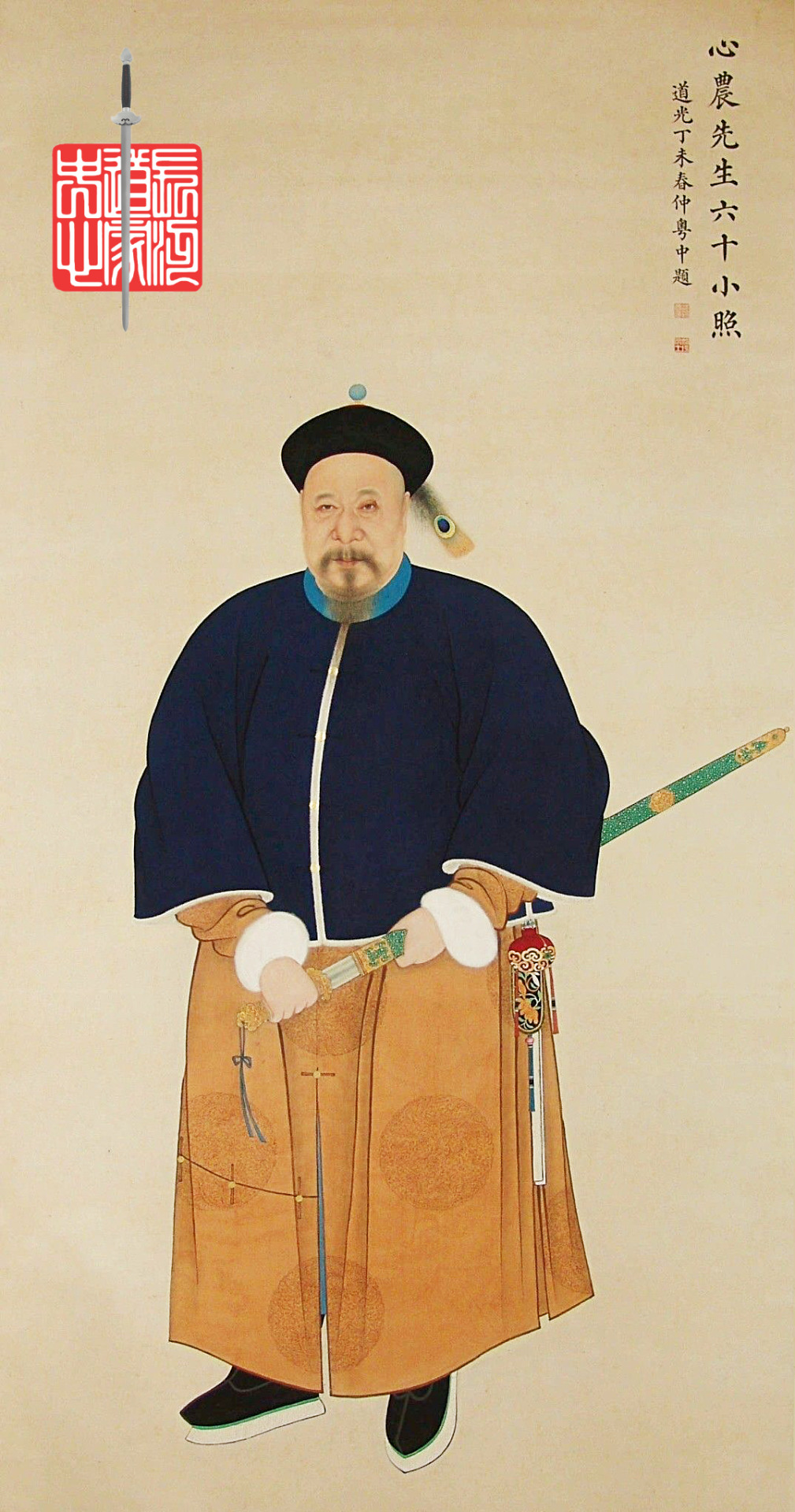

Qing Period images of Bannermen drawing their swords are rare, so I was quite please to uncover this portrait of one unsheathing his Jian.
Comparing what we see here with other Qing Period paintings, we should note several consistent details-
When Drawing a Jian, the left hand typically grasps the scabbard near to, or at, the scabbard throat.
The upward draw into a Liao Cut appears to be the favored draw. This upward Liao can be angled to intercept a cut or initiate an advance.
Jian were often slung from a belt by cloth lanyards, however, it appears that in most cases Jianke preferred to carry the sword in the left free from any restraints a lanyard might impose.
While these details of technique and carry are those commonly depicted, we should also keep in mind that these might have also been a matter of artistic convention of the time.
#chinesemartialart#jianfa#chineseswordsmanship#jianshu#chineseswordfighting#scottmrodell#duanbing#chineseswordplay#swordplay#chinesemartialarts#zhongguojianfa#historicalswordsmanship#swordfightingschool#swordfightingskills#swordfightingclasses#swordfighting#chineseswordwork#swordwork#daoistswordarts#daoistsword#taijijian#taijiswordfencing#taijisword#taichisword#劍術#劍法#中國劍法#太極劍#chineseswordarts#chineseswordart
7 notes
·
View notes
Text
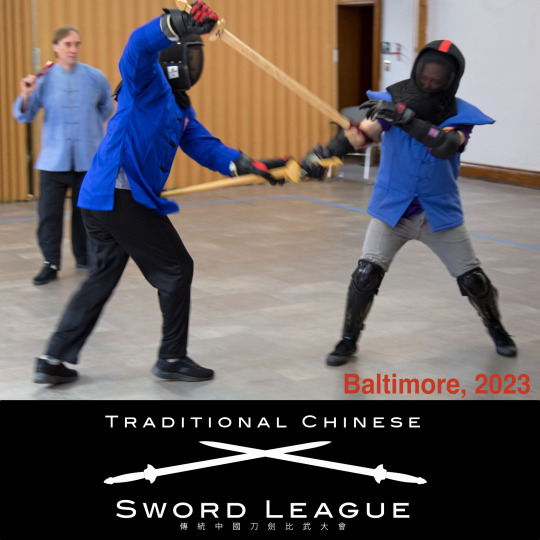
Full Contact Chinese Swordplay Tournament
Baltimore, 2023
No reason why you can’t close and use your empty hand to control your Duifang’s weapon.
A solid blow to the head or worse counts as a “killing blow” and ends the bout.
#jianfa#chineseswordsmanship#chineseswordfighting#chineseswordplay#duanbing#chinesemartialarts#chinesemartialart#swordplay#zhongguojianfa#ukchineseswordfighting#swordsmanship#historicalswordsmanship#swordfightingschool#swordfightingskills#swordfightingclasses#swordfighting#swordwork#chineseswordwork
5 notes
·
View notes
Text
? SWORD Geek ?
Then You Are Going to Love Chinese Sword Fighting!
Unlock the power of Chinese Swordsmanship on a practical and thrilling level. Our online training encapsulates full-contact, realistic swordplay, honing not just your technique and skill but your understanding of this ancient battlefield art tailored for the modern martial journey.
Dive into a Realm Where Steel Meets Skill
Our comprehensive program is designed to cater to both novices and seasoned sword practitioners. Here’s what’s awaiting you:
Attend live weekly webinars, fostering direct engagement, and dynamic feedback.
Dive deep into hundreds of hours of recorded webinars. Learn, revisit, and refine your techniques at your convenience.
Pursue a curriculum forged through ages, battle-tested, and refined for a focused and ever-evolving martial journey.
Embark on a 7-Day Free Trial
Join us today and take the first step towards mastering the ancient art of Chinese sword fighting!
Begin with a 7-day free trial, and continue confidently with our 30-day money-back guarantee.
Are You Ready to Unleash Your Inner Swordmaster?
This isn’t just a hobby, it’s a calling. It’s about honoring age-old traditions while forging new friendships. It’s where nerdy meets warrior. So why wait?
Join Today & Immerse Yourself in the World of Chinese Sword Fighting!
#jianfa#chineseswordsmanship#chineseswordfighting#chineseswordplay#chinesemartialarts#duanbing#scottmrodell#swordplay#chinesemartialart#zhongguojianfa#ukchineseswordfighting#chineseswordarts#daoistswordarts#taijiswordfencing#taijifencing#swordfightingclasses#swordfightingschool#劍法#楊家秘傳太極劍#yangjiamichuantaijijian
2 notes
·
View notes
Text
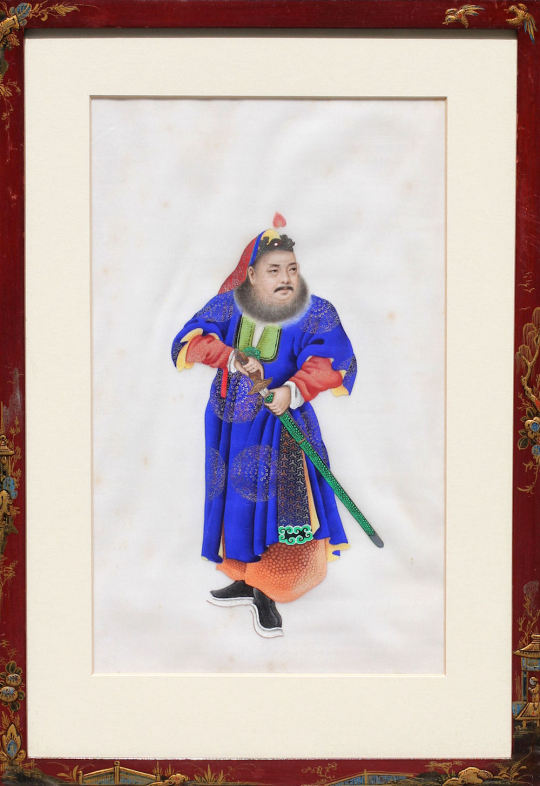
19th Pith Painting of a Jianke in Archaic Clothing
Drawing his Sword-
Another example of a Jianke (swordsman) drawing his jian. As we’ve seen in several other period images, his left hand is positioned at the throat of the scabbard as he draws for a downward cut. These pith paintings were produced in large numbers, this is not a page from a sword manual. So we should be cautious about drawing too many conclusions from it. It is interesting however to note that in multiple period images where a jian is being drawn, the left hand is showed at the top of the scabbard. Drawing of the dao are sometimes also depicted in this fashion, but more often with the left hand further down the scabbard at the suspension band.
I am also pleased to see the shape of the guard is quite similar to my Cutting Jian Hanwei forges.
#chineseswordsmanship#jianfa#chineseswordfighting#chineseswordplay#jianshu#chinesemartialarts#duanbing#chinesemartialart#zhongguojianfa#historicalswordsmanship#swordfightingschool#swordfightingskills#swordfightingclasses#swordfighting#chineseswordwork#swordwork#chineseswordarts#daoistswordarts#taijijian#taijiswordfencing#taijisword#taichisword#wudangjian#wudangsword#swordclasses#中國劍法#chinesefastdraw#劍法#swordfighter#太極劍
3 notes
·
View notes
Photo

Chinese Swords Deflection, Edge Parries or Blade Flat? What do the Antique Swords Tell Us?
Setting theory aside, I've been quite fortunate to handle literally thousands of antique Chinese Swords. I did this as a dealer, owning and reselling over 600 pieces, visiting major private collections (when you are dealing, people you sell to will invite you to see their collections, and traveling to examine museum reserve collections. For example, I've handled everything in the reserve collections of the State Historical Museum in Moscow, and the Met's in New York.
One thing that is quite clear from examining the large sample of Qing and Ming period swords is that there is a distinct lack of edge damage. Certainly, all acknowledge that is would and did happen in life and death encounters. But there is no evidence that edge parrying was common or the standard. Quite the opposite in fact, one finds cuts on the blade flat, and few serious edge nicks, certainly not exhibiting the depth or the sort of damage the test show result from edge parrying.
Concerning museum collections, it can be argued that they represent a sort of “survivor’s bias.” That is, those pieces persevered in these collections are the better pieces, often those made for the upper class and ranks. Some of swords displayed in museums never saw any combat use. This is a valid and important point. However, this is not generally the case with museum reserve collections. This is wear the swords not “nice” enough for display are housed for study. Here one can counter the “user” swords. The same is true of private collections. And a very large proportion of the weapons I handled as an antique dealer were these made for, and put to use, category of swords. Study the whole of the surviving material is what is important when it come to drawing any conclusions. Having done this, as stated above, the evidence overwhelmingly supports the conclusion that edge parries were avoided and that blade felt was standardly employed for deflections.
#zhongguojianfa#juniorjianfa#jianfa#jianshu#scottrodell#scottmrodell#chineseswordsmanship#chineseswordfighting#historicalswordsmanship#swordsmanship#swordfightingskills#swordfightingschool#swordfighting#chineseswordplay#swordplay#duanbing#chineseswordwork#swordwork#swords#sword#chineseswordarts#daoistswordarts#swordarts#swordart#chineseswordart#daoistswordman#daoistsword#swordfighter#yangjiamichuantaijijian#taijijian
13 notes
·
View notes
Photo

Twin Cities Chinese Swordsmanship Seminar March 3-6, '23
Great River Taoist Center Twin Cities
https://grtcmsp.business.site/?utm_source=gmb&utm_medium=referral
#zhongguojianfa#jianfa#jianshu#scottrodell#scottmrodell#chineseswordsmanship#historicalswordsmanship#swordsmanship#chineseswordfighting#swordfightingschool#swordfightingskills#swordfighting#chineseswordplay#swordplay#duanbing#chineseswordwork#swordwork#daoistswordarts#chineseswordart#swordarts#swordart#chineseswordarts#daoistswordsman#daoistsword#yangjiamichuantaijijian#taijijian#wudangjian#taichisword#wudangsword#chinesemartialarts
9 notes
·
View notes
Text
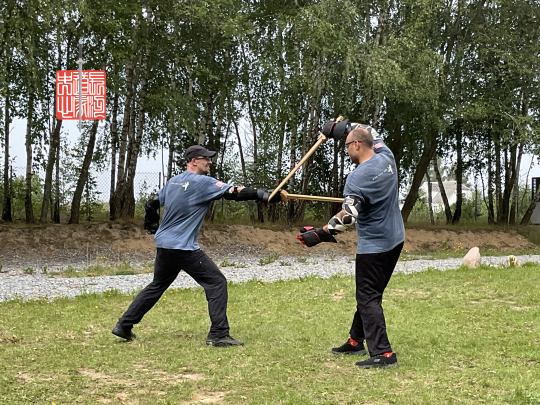
A well timed, perfectly placed Ge Cut delivered by Roland Tepp on the right that intercepts his duifangs cut. Ge Cuts are properly aimed at the sword arm or hand and not the blade. Striking the duifang’s blade often has little result or can even giving the duifang energy to counter-cut with.
Roland Tepp is a long time Apprentice Student at the Academy and runs the Tallinn Branch of the Great River Taoist Center where he teaches.
#jianfa#chineseswordfighting#chineseswordplay#chineseswordsmanship#chinesemartialarts#jianshu#duanbing#chinesemartialart#swordplay#scottmrodell#daoistsword#zhongguojianfa#ukchineseswordfighting#swordsmanship#historicalswordsmanship#swordfightingschool#swordfightingskills#swordfightingclasses#swordfighting#chineseswordwork#swordwork#chineseswordarts#daoistswordarts#taijifencing
4 notes
·
View notes
Photo
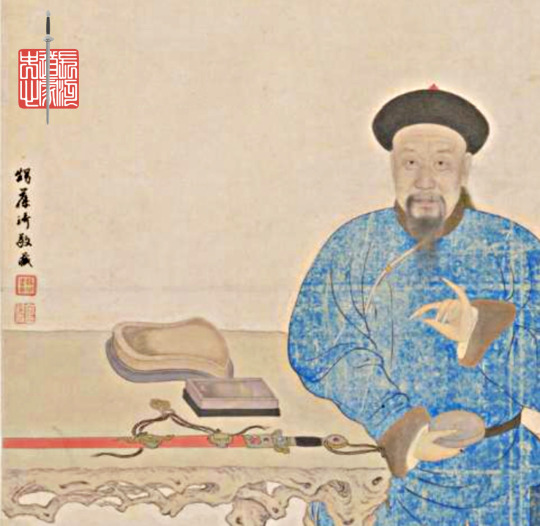


Manchu Scholar with his Sword and Ink Stones, the perfect example of the Sword and Brush as One~
As depicted in "Tie Bao Xiang,《铁保像》" Qing Dynasty, painted by Ding Yicheng
Described by the Palace Museum as a Sitting Portrait of Tie Bao, a famous calligrapher in the Qing Dynasty. Tie Bao wears a blue robe and black shoes, a crown hat on his head, his left hand is naturally bent in the shape of a beard, his right arm is leaning on the table, holding an inkstone tile, his face is dignified, and his eyes are full of spirit. On the wooden table on the right side of the figure, there are two inkstone tiles and a sword.
This work still retains the traditional composition method of the Bochen School, focusing on the characters, with appropriate background scenery to highlight the protagonist's identity and personality characteristics. In the picture, it is very appropriate to use inkstone and sword to express the character of a Manchu official and calligrapher.
See:https://www.dpm.org.cn/collection/paint/228821.html?hl=%E7%A0%9A
This interesting jian is a "Longquan (Dragon Well) Style. For a Similar Example, See- Duanjian, the Chinese Short Sword- Chinese Swords and Swordsmanship Series on YouTube- https://www.youtube.com/watch?v=awmdezzqa7U&t=363s
#zhongguojianfa#jianfa#jianshu#chineseswordsmanship#historicalswordsmanship#swordsmanship#chineseswordfighting#swordfightingskills#ukchineseswordfighting#swordfighting#chineseswordplay#swordplay#duanbing#chineseswordwork#swordwork#swords#sword#daoistswordarts#chineseswordart#swordarts#swordart#daoistsword#manchu#bannerman#qingdynasty#qingbannerman#taijijian#daoistswordsman#taijiswordfencing#taijisword
6 notes
·
View notes
Photo

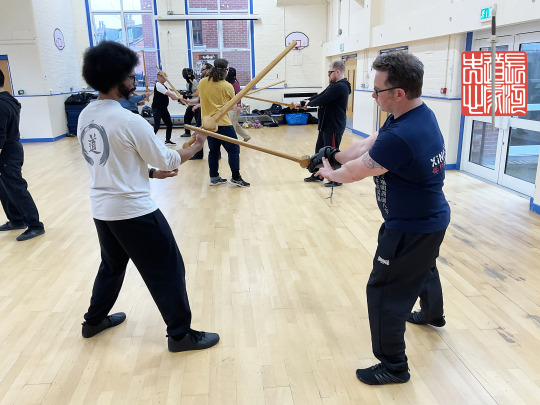
Thanks to Apprentice Students Paul Andrews and Gavin King for once again helping out at the Leeds Chinese Sword Academy GRTC Seminar last weekend in Leeds, UK.
The 1st Photos shows Gavin King, sporting his GRTC Manchu Shirt instructs new students in the basic Ci (Thrust Drill), and the proper deflection with the Blade Flat.
In the 2nd Photo, Paul Andrews in blue executes a Pi Cut to Tom Daley's wrist as he controls the centerline.
#zhongguojianfa#jianfa#jianshu#scottrodell#scottmrodell#chineseswordsmanship#historicalswordsmanship#swordsmanship#chineseswordplay#swordplay#duanbing#chineseswordwork#swordwork#daoistswordarts#chineseswordart#swordarts#swordart#yangjiamichuantaijijian#taijijian#daoistswordsman#daoistsword#taijiswordfencing#taijisword#wudangjian#wudangsword#chinesemartialarts#chinesemartialart#swordfighter#swordfightingschool#swordfightingskills
4 notes
·
View notes
Text
youtube
#jianfa#chineseswordsmanship#jianshu#chineseswordfighting#chineseswordplay#scottmrodell#swordplay#duanbing#chinesemartialarts#chinesemartialart#scottrodell#zhongguojianfa#swordsmanship#testcutting#tameshigiri#chineseswordwork#swordwork#swordarts#chineseswordarts#chineseswordart#daoistswordsman#daoistswordarts#taijijian#taijiswordfencing#taijisword#wudangjian#wudangsword#Youtube
2 notes
·
View notes
Photo
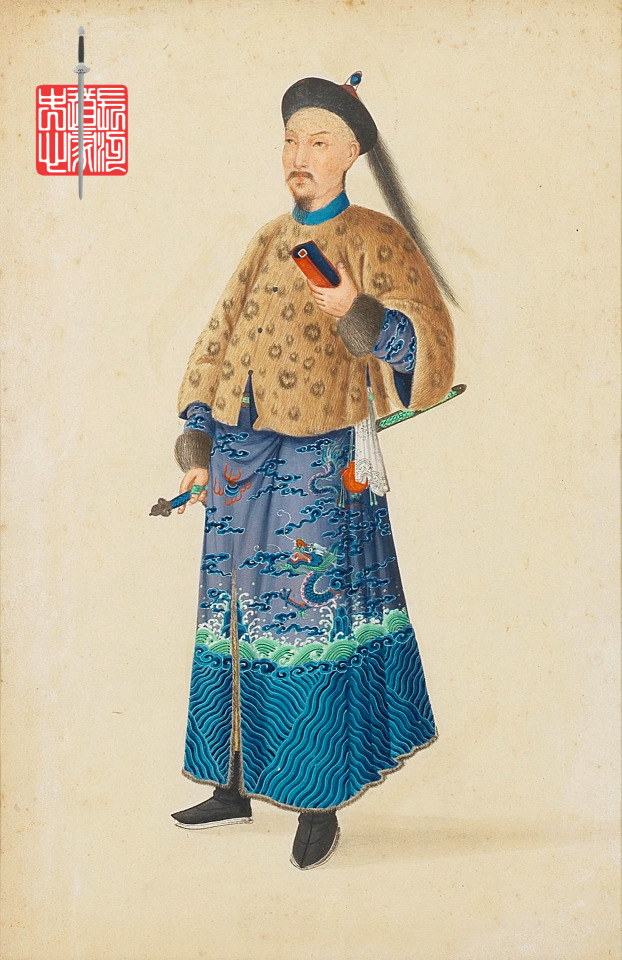
A High Qing Officer
Armed with a Jian. The vast majority of Manchu Bannermen carried dao, so it is quite unusual to see an official armed in this fashion.We know he is a Bannerman by the green jade thumb around his right thumb.Thumb rings were worn as a symbol of their status as Qiren.
One might think that his man was left handed given that he is wearing his sword on his right hip. But the thumb ring on his right thumb indicated he was indeed right handed. Perhaps there were some social situations where those armed were required to wear their swords on the opposite hip to prevent a quick draw. If this is the case, I am unaware of such a tradition in China. My suggestion is pure speculation. It is also quite possible that the artist simple decided he liked this look better and the swords position on the right hip has nothing to do with how it was actual worn.
19th Century, Chinese School Painting.
#qing#qingdynasty#manchu#bannerman#manchubannerman#zhongguojianfa#jianfa#chineseswordsmanship#historicalswordsmanship#swordsmanship#chineseswordplay#swordplay#duanbing#chineseswordwork#swordwork#swords#chineseswordarts#chineseswordart#daositswordarts#swordarts#swordart#chinesemartialarts#chinesemartialart#中國劍法#劍法#chineseswordsman#chineseswords#chinesesword#kungfuweapons
2 notes
·
View notes
Photo
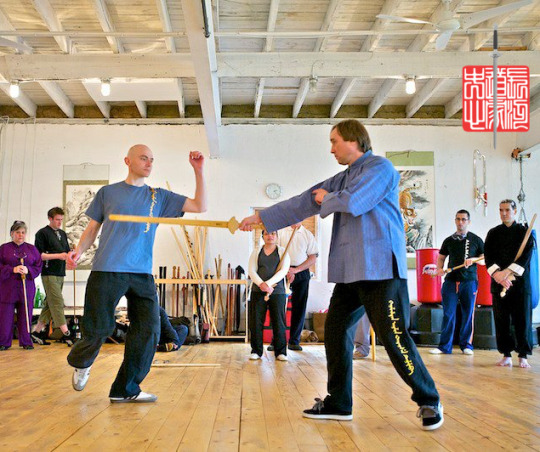
Willow Bends, one of our Basic Core Exercises in Chinese Swordsmanship (Jianfa) In this exercise, one student has his or her sword while the other does not. This helps students to quickly get a sense of distance and timing, as well as learning to stay calm in the face of incoming cuts.
https://www.chineseswordacademy.com/
#zhongguojianfa#jianfa#jianshu#scottmrodel#scottrodell#chineseswordsmanship#historicalswordsmanship#swordsmanship#chineseswordfighting#swordfightingschool#swordfightingskills#swordfighting#chineseswordplay#swordplay#duanbing#chineseswordwork#swordwork#swords#daoistswordarts#chineseswordart#swordart#chineseswordarts#daositswordarts#swordarts#daoistswordsman#taijiswordfencing#yangjiamichuantaijijian#taijijian#taijisword#taichisword
4 notes
·
View notes
Photo
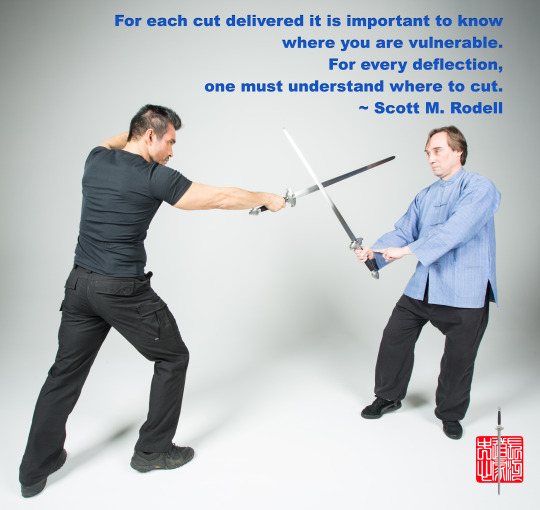
For each cut delivered
it is important to know where you
are vulnerable.
For every deflection,
one must understand where
to cut.
~ Scott M. Rodell
#zhongguojianfa#jianfa#jianshu#scottrodell#scottmrodell#swordsmanship#chineseswordsmanship#ukchineseswordfighting#chineseswordfighting#historicalswordsmanship#chineseswordplay#swordplay#swordfightingschool#swordfightingskills#swordfighting#duanbing#chineseswordwork#swordwork#swords#sword#daoistswordarts#chineseswordart#swordarts#swordart#chineseswordarts#daoistswordman#daoistswordsman#daoistsword#yangjiamichuantaijijian#taijijian
19 notes
·
View notes